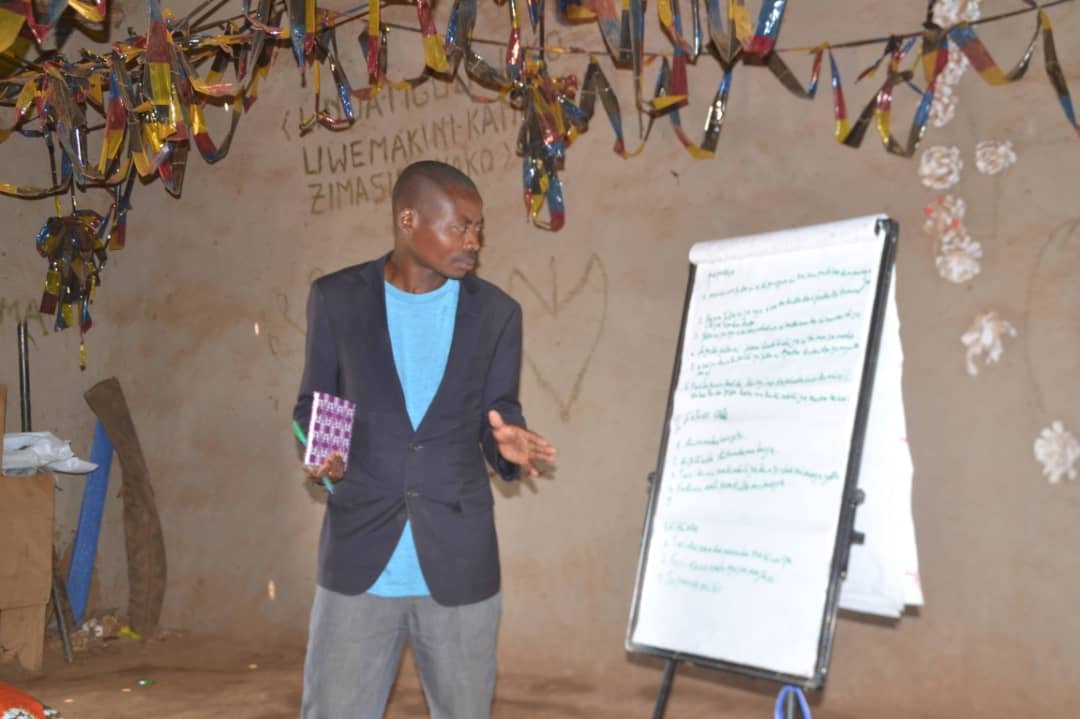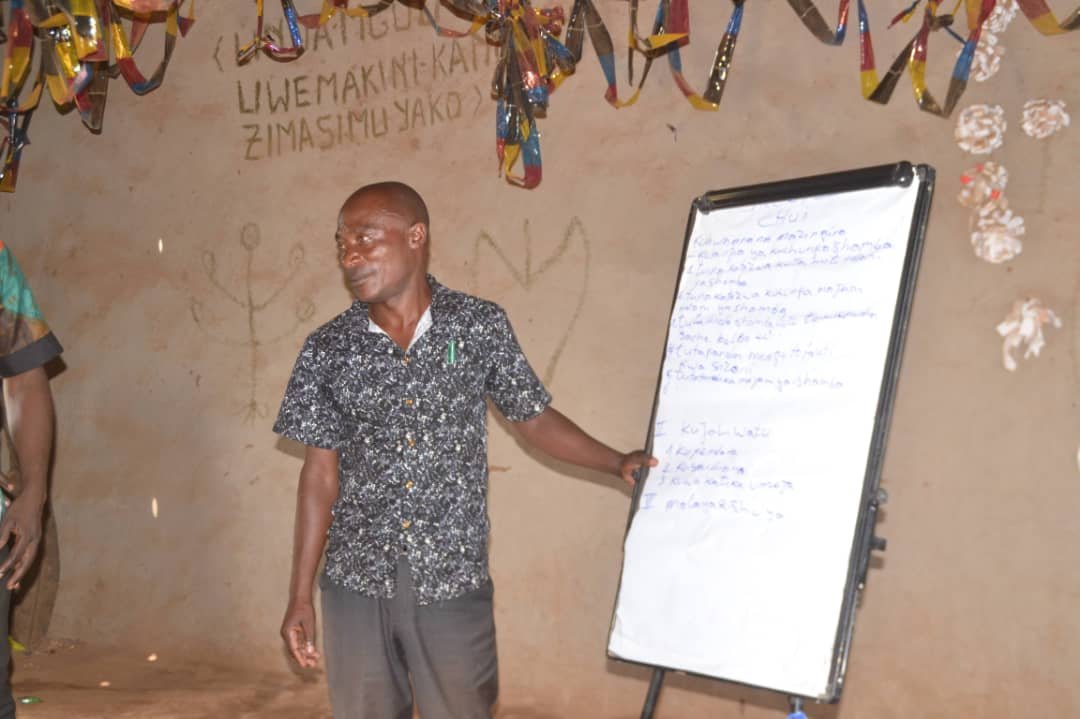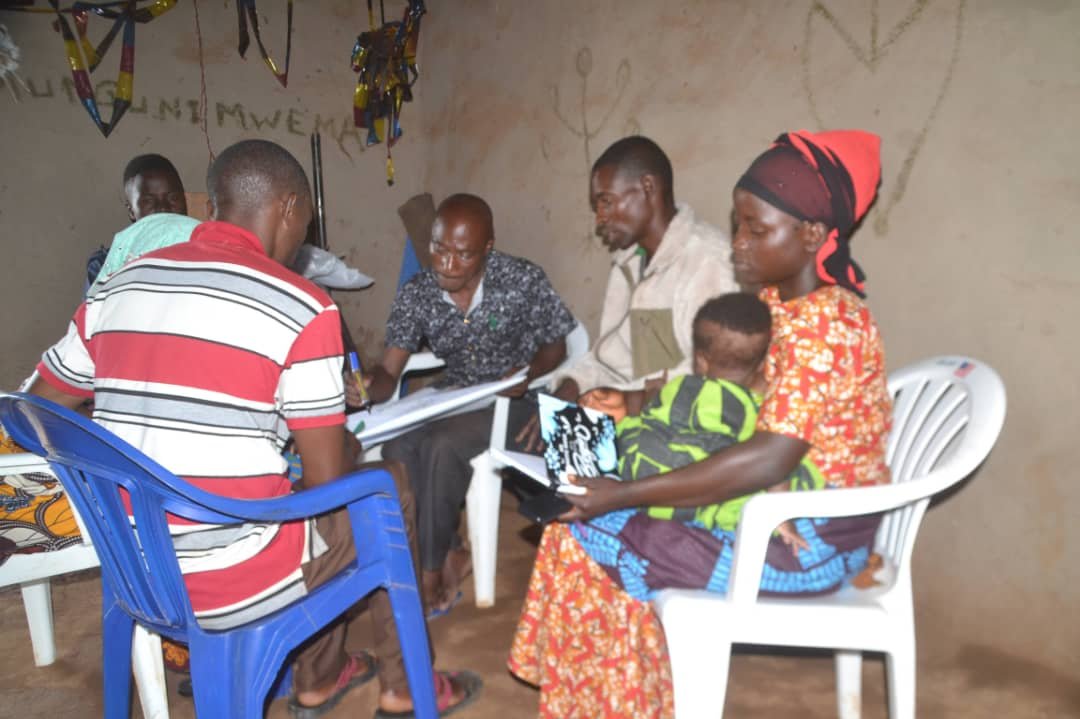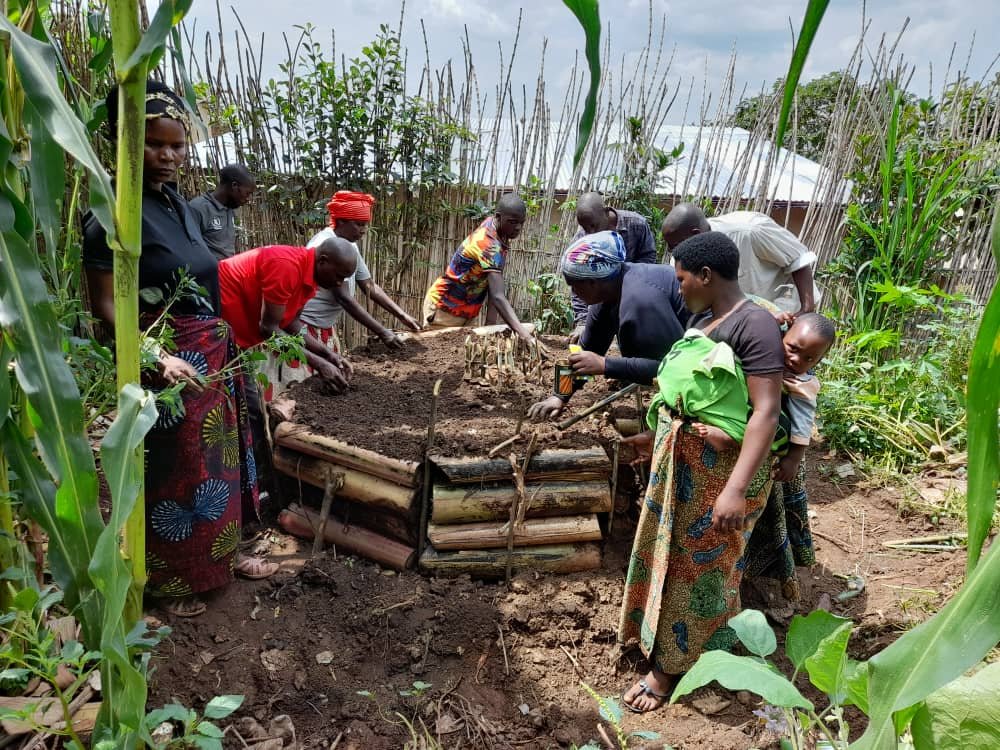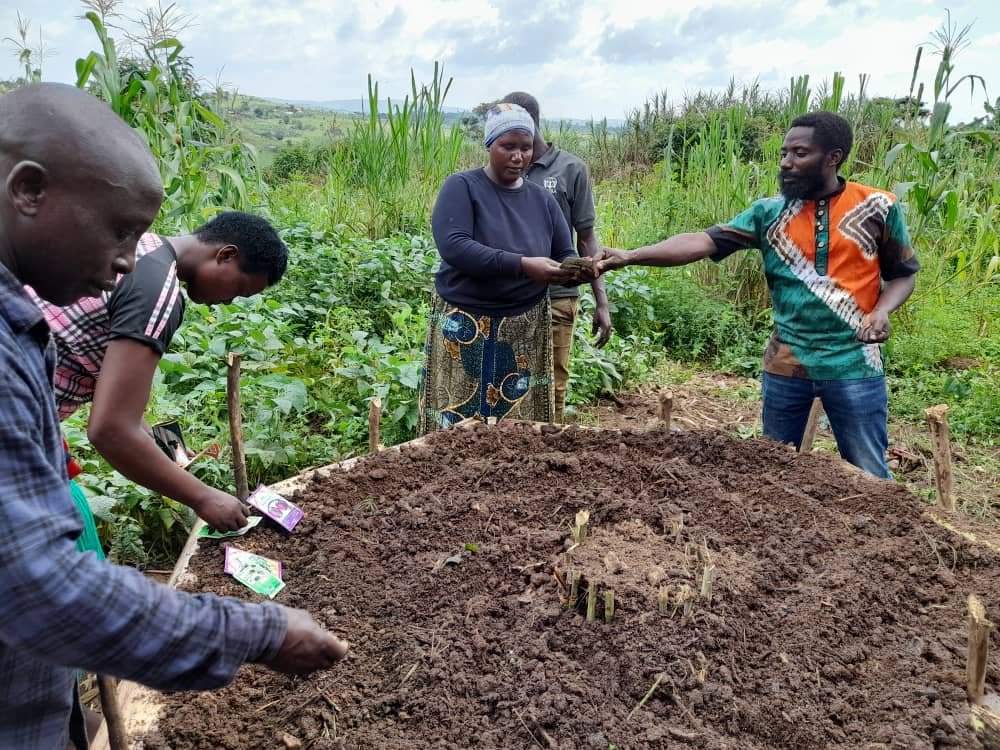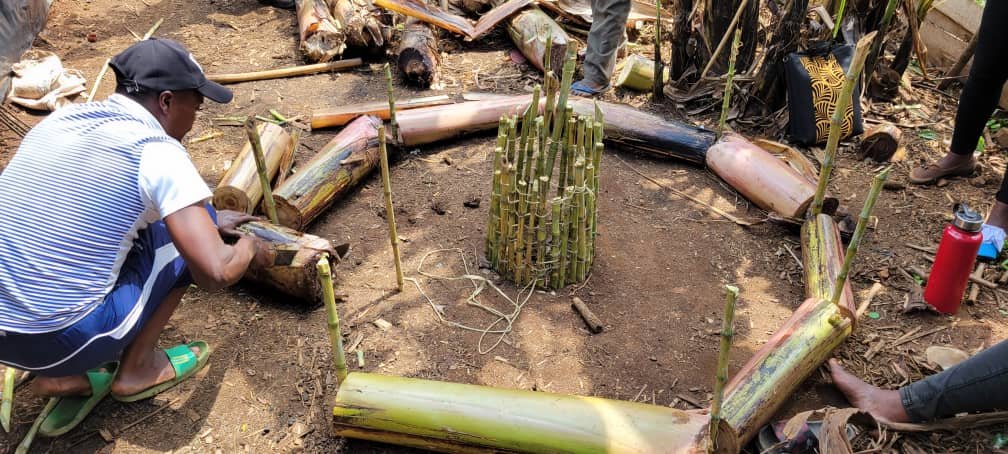Rwamwanja Rural Foundation: Harnessing the Benefits of Permaculture
The work of Rwamwanja Rural Foundation focuses on improving the quality of life of the rural communities in Rwamwanja settlement (Uganda) by providing training and support to community members to become self-sufficient and resilient. Their education and work includes permaculture, mushroom cultivation, making briquette charcoal, and feeding back the soil through reducing food waste & composting practices.
Recently Bemeriki Bisimwa Dusabe, RRF founder, hosted a training workshop which culminated in an educational permaculture ethics presentation, followed by the successful completion of a keyhole garden. The construction and maintenance of each keyhole garden will support 30 people with improved food security and nutrition.
Within the permaculture ethics session, the principles that guide the design and maintenance of sustainable human settlements and agricultural systems were explored. They are based on the idea that humans should work with nature, rather than against it, and that we should strive to meet our needs while also preserving the environment and its resources. What are the twelve principles that guide permaculture design?
“What are the twelve principles that guide permaculture design? ”
-
Take time to observe the environment and the elements within it before making any decisions.
-
Identify resources that can be harvested and stored for later use.
-
Make sure that the design of the permaculture system provides a yield of some kind.
-
Monitor the system and adjust it as needed to ensure it is functioning optimally.
-
Utilize renewable resources and services to ensure sustainability.
-
Design the system so that all resources are used and nothing is wasted.
-
Start with the big picture and then work your way down to the details.
-
Design the system so that elements work together rather than in isolation.
-
Start small and work slowly to allow the system to develop and mature over time.
-
Utilize a variety of elements in the design to ensure resilience.
-
Take advantage of the edges of the system to maximize productivity.
-
Be prepared to adjust the system as needed in response to changes in the environment.
“Keyhole garden design with Rwamwanja Rural Foundation ”
Keyhole gardening is a type of raised bed garden that is circular in shape and has a composting basket in the center. The stalks of recently felled plantain trees to create the raised beds, anchored in place with branches.
The composting basket, constructed from branches and secured with string until surrounded by a ring of soil and vegetables are planted in the soil around the composting basket. As the garden is designed and positioned to service 30 community members, the compost basket will be regularly filled with food scraps, manure, and other organic matter which would otherwise become daily waste products. The shape of the keyhole garden allows for maximum water retention and efficient use of space.
Other benefits of keyhole gardening include increased water efficiency, improved soil fertility, and improved crop yields. The circular shape of the garden also allows for better air circulation, more efficient use of space, and easy access to the bed.
What’s next?
RRF has been widening access to mushroom cultivation within Rwamwanja, Bemeriki is busy setting up a laboratory - equipt to cultivate and store enough spawn to support up to 350 families. Subscribe to our newsletter or follow us on Instagram to hear more inspirational stories of what #regenerationlookslike.


